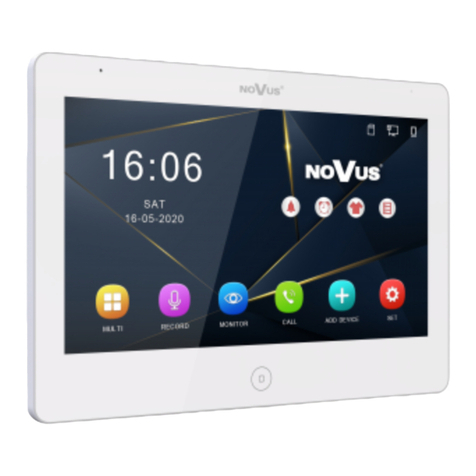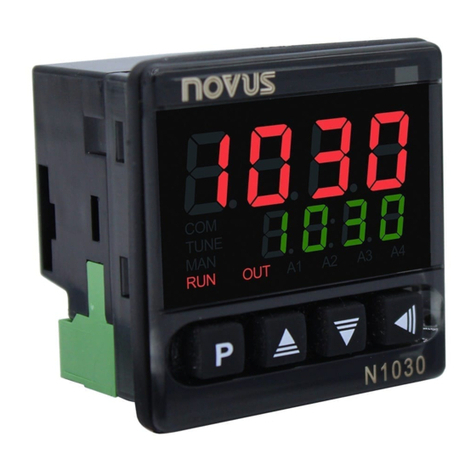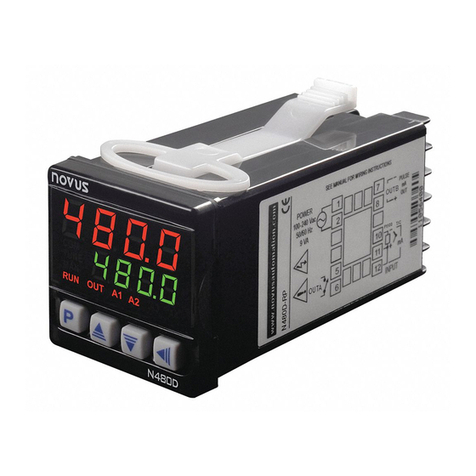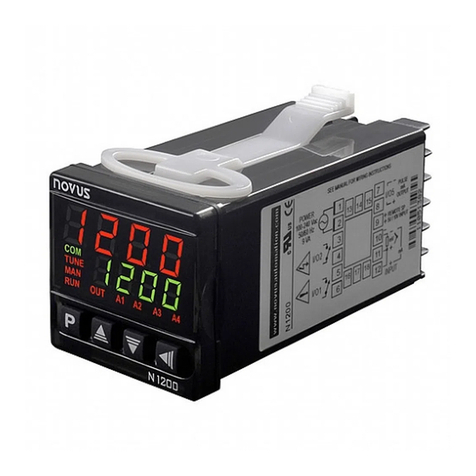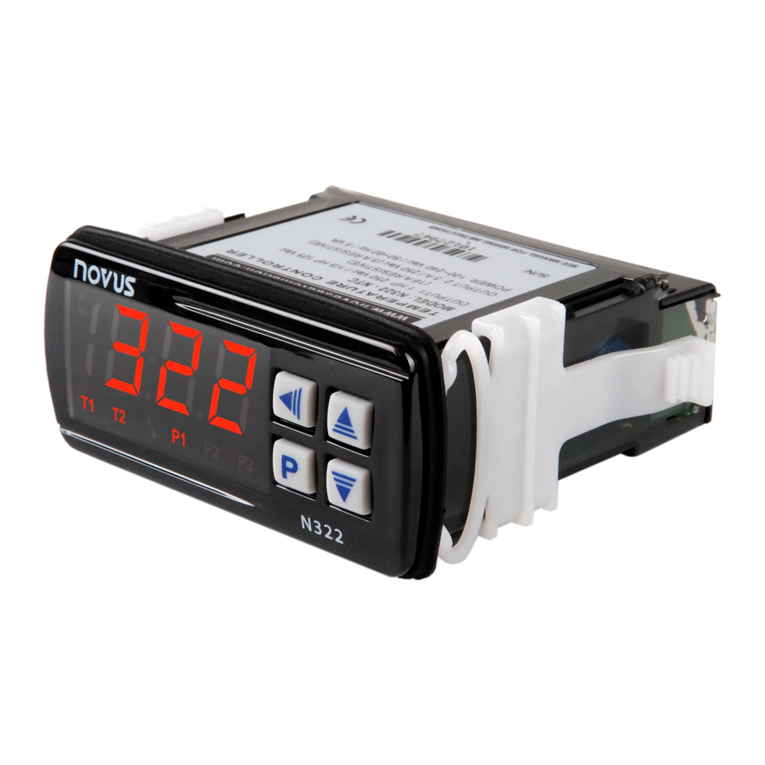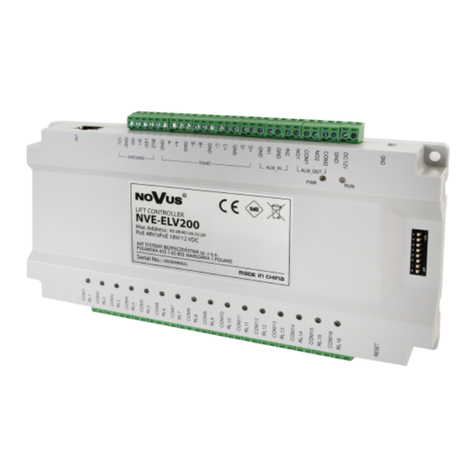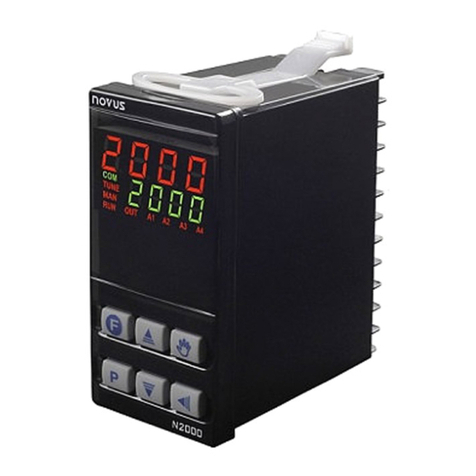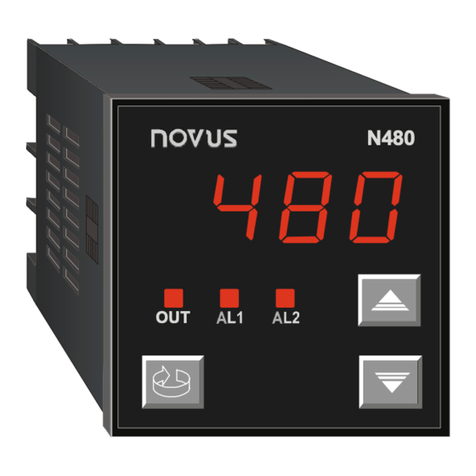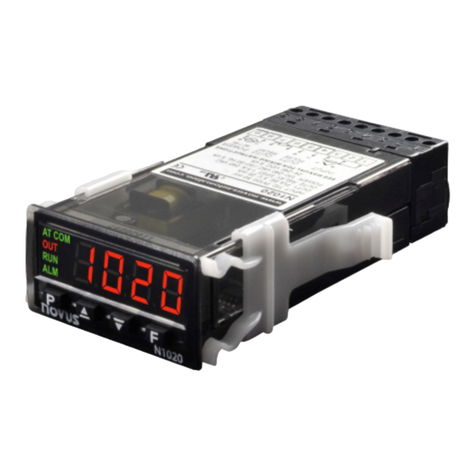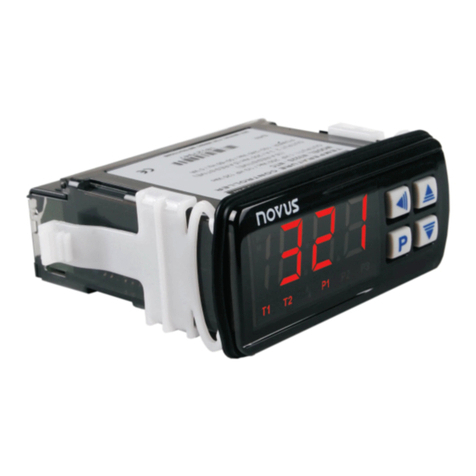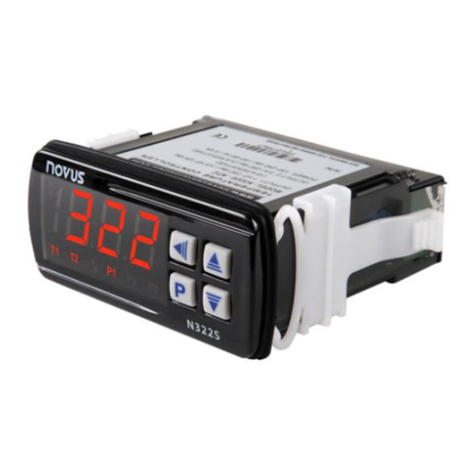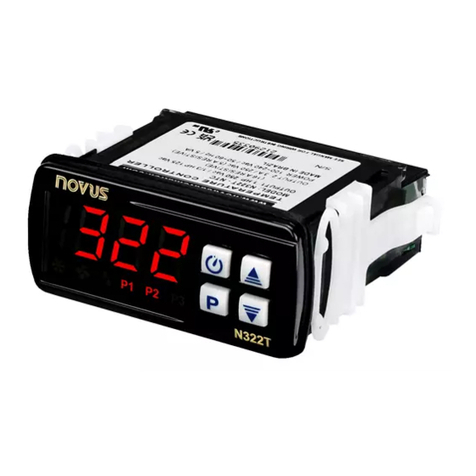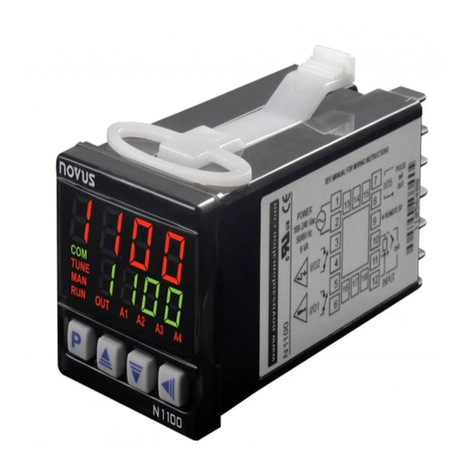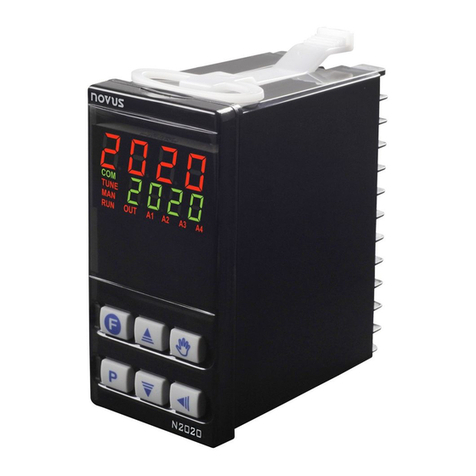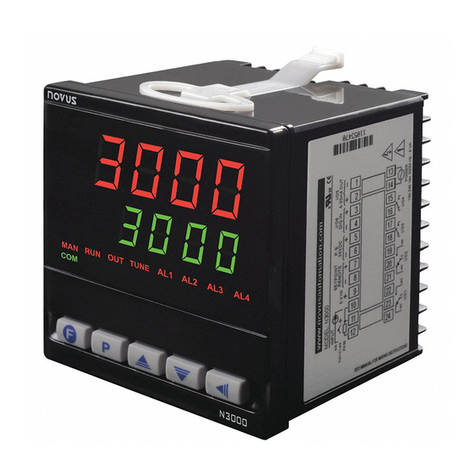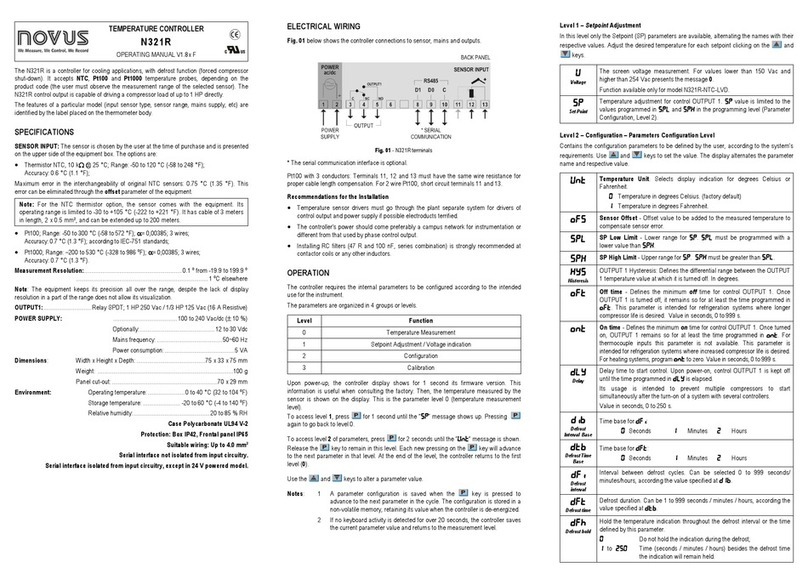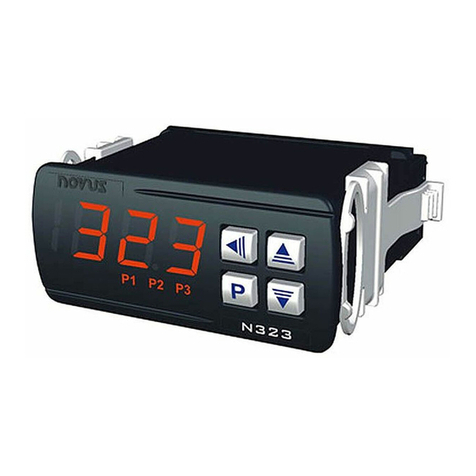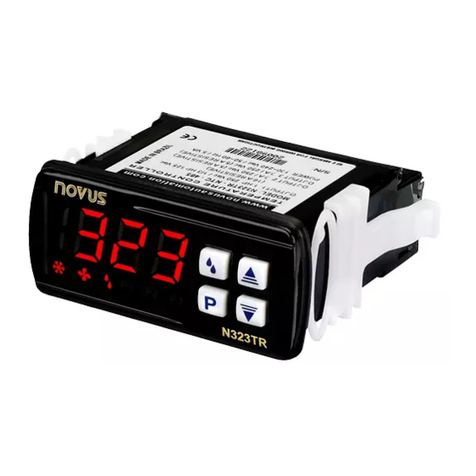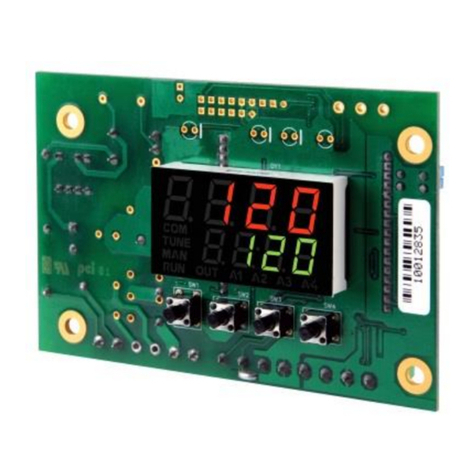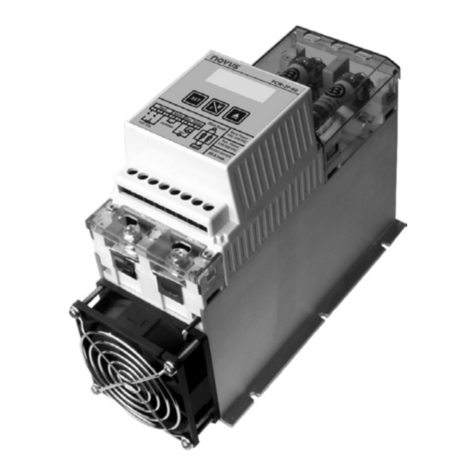N960 Controller
NOVUS AUTOMATION 6/6
SPECIFICATIONS
DIMENSIONS:................................................96 x 96 x 90 mm (1/4 DIN)
............................................................... Approximate Weight: 330 g
CUTOUT IN THE PANEL:............................ 93 x 93 mm (+0.5 -0.0 mm)
POWER SUPPLY:........................ 100 to 240 Vac/dc (±10 %), 50/60 Hz
Optional 24 V:...................... 12 to 24 Vdc / 24 Vac (-10 % / +20 %)
Consumo máximo:................................................................... 6 VA
ENVIRONMENTAL CONDITIONS:
Operation Temperature: .................................................. 5 to 50 C
Relative Humidity:..............................................80 % max. up 30 ºC
For temperatures above 30 ºC, reduce 3 % for each ºC
Internal Use; Category of installation II, Degree of pollution 2;
altitude < 2000 m.
INPUT..............................Thermocouples, Pt100 (according to Table 1)
Internal Resolution: .......................................32767 levels (15 bits)
Resolution of Display:.........................................0.1 / 1 (°C / °F)
Rate of input reading:......................................up to 55 per second
Precision @ 25 °C:.......... J, K, T,E: 0.25 % of the span 1 ºC / °F
......................................... N, R, S, B: 0.25 % of the span 3 ºC / °F
................................................................... Pt100: 0.2 % of the span
Input Impedance: .................... Pt100 and thermocouples: >10 M
Measurement of Pt100: ..................Three wires type, (=0.00385)
with compensation for cable length, excitation current of 0.170 mA.
All input and output types are factory-calibrated. Thermocouples
according to standard NBR 12771 / 99, RTD’s NBR 13773 / 97;
OUTPUTS
OUTA / OUTB................................. Relay SPST-NA: 3 A / 240 Vac,
.......................................... General use, resistive load; 100 k cycles
OUTD.......................................... PULSE 12V / 0-20 mA or 4-20 mA
....................................................550 max. 31000 levels, Isolated
ELECTROMAGNETIC COMPATIBILITY:
............................................EN 61326-1:1997 and EN 61326-1/A1:1998
SAFETY: ..............................EN61010-1:1993 and EN61010-1/A2:1995
USB INTERFACE: 2.0, CDC class (virtual communications port),
MODBUS RTU protocol.
FRONT PANEL: IP65, polycarbonate UL94 V-2;
CASE: IP30, ABS+PC UL94 V-0;
STARTS UP OPERATION: after 3 seconds connected to the power
supply.
MODEL IDENTIFICATION
The sticker on the controller presents the identification of the model, as
described below.
N960 - A
Where A =........................... 24V for power supply 12 to 24 Vdc / 24 Vac
.............................................blank: power supply 100 to 240 Vac/dc
SAFETY INFORMATION
Any control system design should take into account that any part of the
system has the potential to fail. This product is not a protection or safety
device and its alarms are not intended to protect against product failures.
Independent safety devices should be always provided if personnel or
property are at risk.
Product performance and specifications may be affected by its
environment and installation. It’s user’s responsibility to assure proper
grounding, shielding, cable routing and electrical noise filtering, in
accordance with local regulations, EMC standards and good installation
practices.
SUPPORT AND MAINTENANCE
This product contains no serviceable parts inside. Contact our local
distributor in case you need authorized service. For troubleshooting, visit
our FAQ at m www.novusautomation.com.
LIMITED WARRANTY AND LIMITATION OF LIABILITY
NOVUS warrants to the original purchaser that this product is free from
defects in material and workmanship under normal use and service within
one (1) year from the date of shipment from factory or from its official
sales channel to the original purchaser.
NOVUS liability under this warranty shall not in any case exceed the cost
of correcting defects in the product or of supplying replacement product
as herein provided and upon the expiration of the warranty period all such
liability shall terminate.
For complete information on warranty and liability limitations, check
appropriate section in our web site: www.novusautomation.com/warranty.
